Transform Your Skin: Mastering ETR Type 1 Rosacea with Expert Care, Treatment, and Insight
Unlocking the Secrets to Type 1 Rosacea Treatment: Expert Care and Insight
Hey there!
Thrilled you’re here to unravel Erythematotelangiectatic Rosacea (ETR) or Type 1 Rosacea with us!
Of the four different subtypes of rosacea, ETR is the most common form of rosacea.
In fact, an enormous review of 39 studies (including more than 9000 patients) shows that the prevalence of ETR was a whopping 57%! 1
In this article, we hope to dissect some complex medical terms and give you clear insights to help manage the unwelcome facial redness, visible blood vessels, and cheek-flushing characteristics of Type 1 Rosacea.
No need to worry; we’re exploring the latest medical treatments to reduce redness and enhance your self-assurance. Get ready for a journey to clearer skin and renewed confidence.
Let’s get started on this path together!
Key Points: What We’ll Chat About
- Type 1 Rosacea (ETR) is characterized by facial redness and visible blood vessels
- Identifying and avoiding your own triggers can help manage symptoms
- Conventional management options vs. holistic ways to heal from the inside out
- Sun fear vs. safe sun exposure
- Ongoing research continues to provide hope for new and improved methods of healing
Why People Should Read This Article
Navigating through the sea of information about rosacea can be overwhelming. This article simplifies the understanding of Type 1 Rosacea, providing actionable tips for management, backed by the latest research. Whether you’re newly diagnosed or seeking more knowledge to reverse your condition from the inside out, this article is a valuable resource.
There are four types of rosacea:
 Type 1: Erythematotelangiectatic Rosacea
Type 1: Erythematotelangiectatic Rosacea
Marked by enduring facial redness and visible blood vessels, Type 1 Rosacea may intensify without treatment, spreading and possibly becoming permanent. Flare-ups of redness and visible small blood vessels under the skin characterize this subtype.
 Type 2: Papulopustular Rosacea
Type 2: Papulopustular Rosacea
Papulopustular rosacea usually features red, swollen bumps, “whitehead” pustules mainly on the face, often mistaken for acne break outs, and papules. Severe cases may present with over 40 blemishes, including on the scalp, neck, or chest, with facial redness and flushing.
 Type 3: Phymatous Rosacea
Type 3: Phymatous Rosacea
Phymatous rosacea thickens and scars the skin, especially the nose, leading to a bumpy and swollen appearance, often termed rhinophyma. This type, more common in older men, can also affect other facial areas and is distinguishable from acne by its texture and discoloration.
 Type 4: Ocular Rosacea
Type 4: Ocular Rosacea
Ocular rosacea is characterized by chronic inflammation, primarily of the eye, causing redness, burning, and itching. It may precede or accompany facial rosacea, alerting individuals to potential facial symptoms.
What’s the Deal with Type 1 Rosacea?
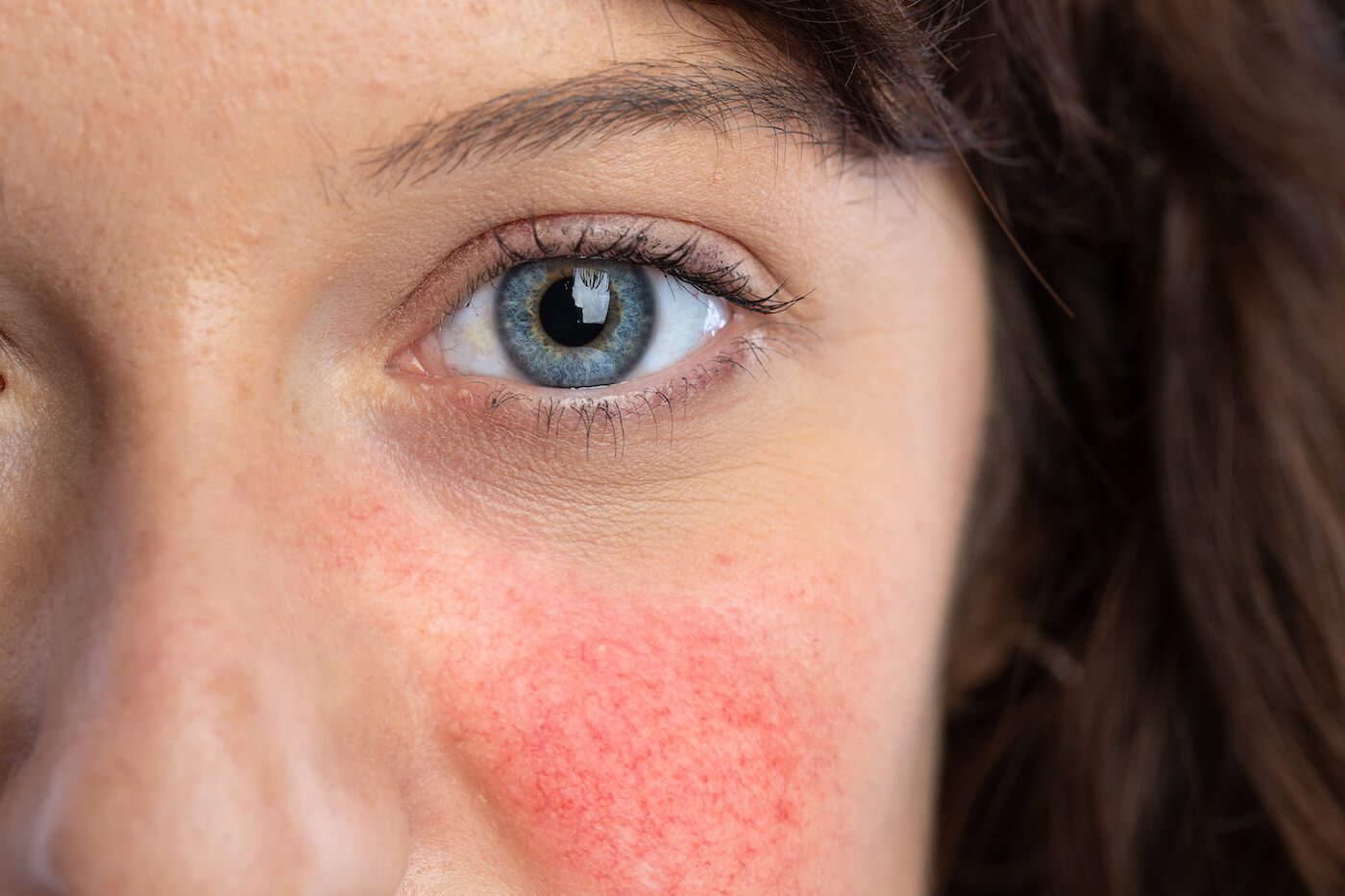
Type 1 Rosacea, known for its facial redness, visible blood vessels, and occasional eye symptoms, impacts millions globally.
Characterized by flushing or red cheeks, this subtype demands a precise diagnosis by a licensed dermatologist. Grasping the essentials of Type 1 Rosacea paves the way for effective management strategies, ensuring those affected can confidently navigate their condition.
What is Type 1 Rosacea ETR (Erythematotelangiectatic)?
Type 1 Rosacea ETR is all about those moments when your skin turns up the heat with flushing and persistent redness. This subtype can cause major disruption to your skincare routine, but the rule of thumb for managing ETR is less is more. Here are four key things you need to know about Type 1 Rosacea ETR:
- Flushing Friends: With Type 1 Rosacea ETR, you can expect those annoying flushing episodes to become your new best friends. They love to show up at the most inconvenient times, leaving you with rosy red cheeks that just won’t quit.
- Visible Blood Vessels: Say hello to those lovely visible blood vessels that like to appear on your cheeks and nose. They can be quite the fashion statement, but not in the way you hoped. These little guys love to multiply and give your skin that lovely red and spidery look.
- Skincare Reactions: Unfortunately, Type 1 Rosacea ETR doesn’t play nicely with traditional skin care such as facials, exfoliants, and even name-brand cleansers. You may have to throw your old routine out the window and start from scratch to avoid flare ups.
- Treatment Troubles: Topical and oral antibiotics are the traditional treatment options, but they often focus on management, not healing. When these options don’t do the trick, it’s time to look outside the box and seek the help of a functional medicine practitioner who’s experienced in reversing rosacea.
The Telltale Signs: Key Symptoms of Type 1 Rosacea
Recognizing Type 1 Rosacea’s key indicators, such as persistent redness, is crucial for early and effective care. This subtype, known for its facial redness and sensitivity, primarily presents with:
- Consistent facial redness
- Prominent blood vessels
- Frequent flushing episodes
- Sensations of stinging and burning
- Sensitive skin due to central facial edema
These symptoms are distinct to Type 1 Rosacea and guide the identification and management strategies of those affected by this condition.
Why Does This Happen to Me?
Pinpointing Early Signs & Triggers of Subtype 1
Curious about the sudden redness and burning sensation on your face? Subtype 1 Rosacea, marked by early erythematotelangiectatic symptoms, can be influenced by several factors:
- Genetics may play a role in passing down rosacea predisposition through generations
- Tiny demodex mites on the skin could worsen symptoms
- Sunlight exposure can intensify symptoms, especially for sensitive skin
- Spicy foods might increase redness and inflammation
- Stress can exacerbate rosacea symptoms, highlighting the need for calm
Understanding these rosacea triggers helps manage and reduce rosacea flare-ups, guiding you towards clearer, more comfortable skin. Keep in mind that triggers are not causes. In other blog posts, we will dive into more detail about the true underlying causes of rosacea, but for today’s discussion, we will give you helpful tips to prevent daily flare-ups.
Getting Diagnosed with Type 1 Rosacea: Key Steps for Clarity
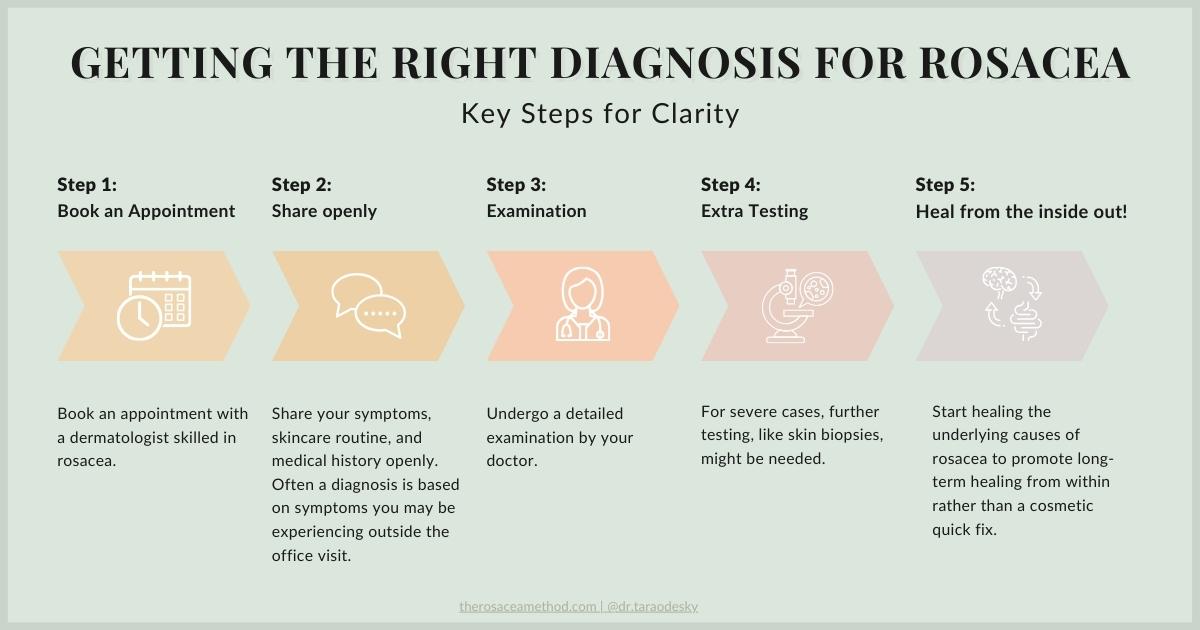
So, you’ve learned about the common triggers of subtype 1 rosacea, but now it’s time to tackle the all-important task of getting the right diagnosis for this pesky condition and ensuring an individual treatment plan. Diagnosing type 1 rosacea can be tricky, but fear not; there are ways to figure it out.
Type 1 Rosacea: Steps to Getting the Right Diagnosis
Step 1: Book an appointment with a dermatologist skilled in rosacea.
Step 2: Share your symptoms, skincare routine, and medical history openly. Often a diagnosis is based on symptoms you may be experiencing outside the office visit.
Step 3: Undergo a detailed examination by your doctor.
Step 4: For severe cases, further testing, like skin biopsies, might be needed.
Getting the right diagnosis for type 1 rosacea is crucial because there are other conditions that can mimic rosacea. Remember, you’re not alone in this journey – many others are dealing with type 1 rosacea too. Stay positive and keep advocating for your own well-being. You deserve to feel comfortable and confident in your own skin.
Tackling Erythematotelangiectatic Rosacea
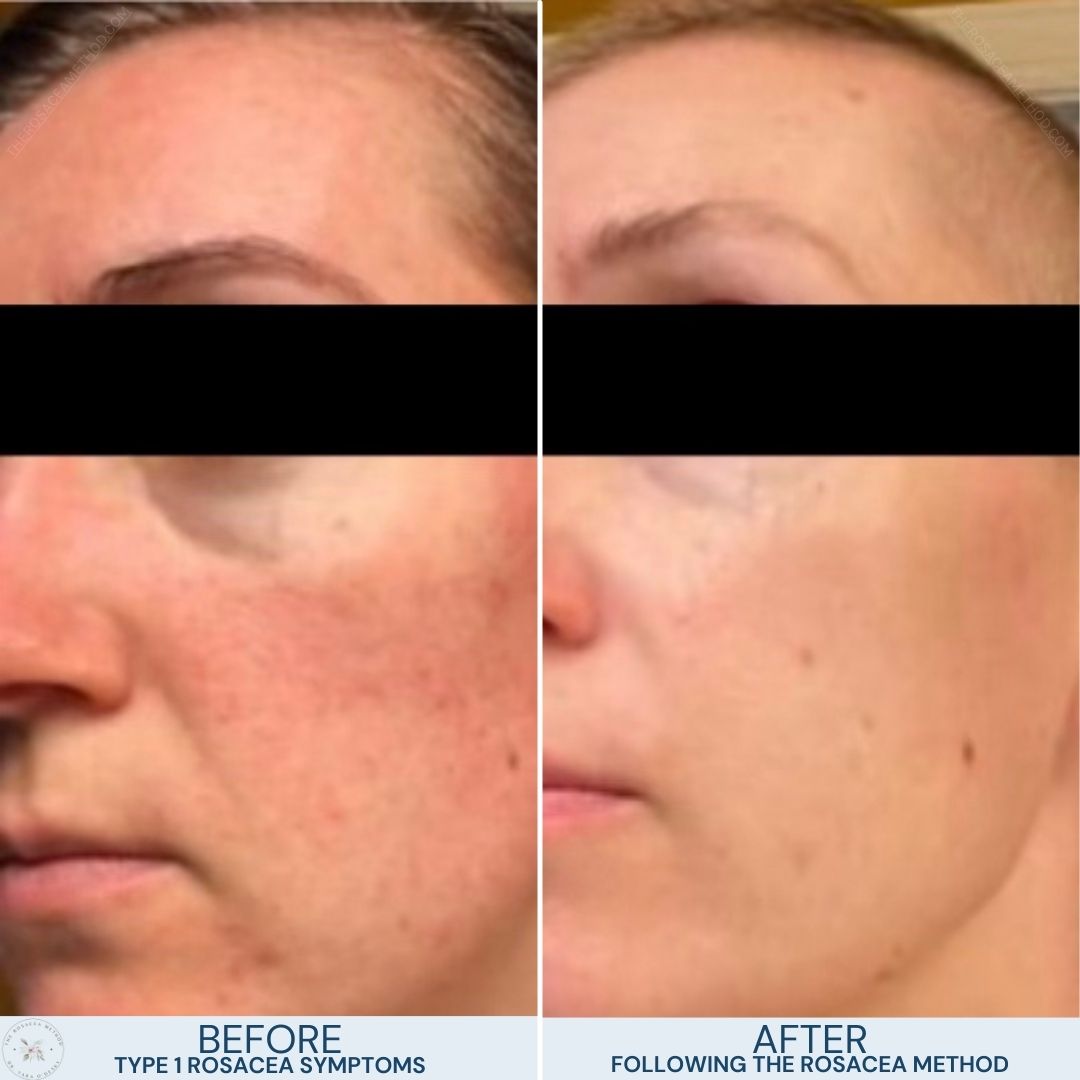
Your Guide to Clearer Skin
Embarking on the journey to manage erythematotelangiectatic rosacea, we emphasize the importance of consulting dermatologists for a proper diagnosis. Our guide below highlights alternatives to pharmaceuticals and laser therapy and underscores the significance of dietary, emotional, and lifestyle adjustments for a holistic approach to care.
Discover how combining professional advice with natural wellness strategies can lead to healthier, clearer skin.
Should You Zap Those Blood Vessels Away?
The Effects of Laser and Light Therapy
When it comes to managing erythematotelangiectatic rosacea, it’s tempting to consider “quick fixes” like antibiotics, cortisone, and laser therapy. However, you should approach these options with caution. Here’s a quick breakdown of why we don’t recommend laser therapy for type 1 rosacea:
- Tender Skin: These treatments can be harsh on our sensitive, rosacea-affected skin, sometimes exacerbating symptoms rather than soothing them.
- Temporary Fix: While they might offer quick visual improvements, these methods don’t tackle the underlying causes of rosacea, leading us to sign on to a lifetime of expensive treatments.
- Investment vs. Reward: They represent a significant financial commitment for a band-aid approach treatment that does not prevent the progression of rosacea.
While laser therapies are popular and can be effective for certain skin concerns, prioritizing treatments that address the root causes of rosacea promotes long-term healing from within rather than a cosmetic quick fix. Let’s aim for sustainable health, both inside and out.
To Medicate or Not to Medicate: The Drawbacks of Pharmaceuticals
After a confirmed rosacea diagnosis, the go-to discussion in the dermatologist’s office generally leads to a prescription for oral and topical antibiotics.
Before taking any antibiotic, it’s important to understand that antibiotics, by nature, kill both good AND bad bacteria. Overuse of antibiotics leads to antibiotic resistance, and when used long-term, they can have serious negative consequences on the gut microbiome.
Ask your doctor about natural alternatives, or better yet, focus on healing internally to reverse rosacea once and for all.
Lifestyle and Dietary Tweaks for the Win!
Looking for ways to win the battle against erythematotelangiectatic rosacea? Despite what you’ve been told, it can often be reversed! Look no further than your lifestyle and rosacea diet choices. Making some simple tweaks can go a long way in managing your symptoms and improving your quality of life.
Dietary
Additionally, incorporating an anti-inflammatory diet can be beneficial. Focus on eliminating gut destroyers like sugar and gluten, and instead, add plenty of gut-healthy prebiotics, probiotics, fermented foods, broths, vegetables, healthy grains, good fats, and lean proteins. Don’t forget to stay away from processed foods, artificial foods, and excessive amounts of caffeine.
Emotions
Your emotional state of mind can play a huge role in your overall health. Stress puts you in a “flight or fight” mode where your heart races, your digestion and detoxification pathways slow down, and your body becomes unable to rest and repair. Stress should be a fleeting emotion- think five minutes or so- and then it should pass. If you are spending a significant amount of time each day in an anxious state, consider ways to regulate these emotions, such as yoga, meditation, outdoor walks, or journaling.
Lifestyle
First and foremost, it’s important to identify and avoid triggers that worsen your rosacea. Common triggers that should be avoided include allergens, stress, extreme heat or cold, alcohol, and certain foods. Keeping a journal to track your symptoms and identify patterns may be helpful.
The Sun: Friend or Foe?
In an effort to avoid flare-ups, rosacea patients often hide from the sun. Yet, the sun is healing! It gives you natural vitamin D, releases endorphins, helps you sleep better, increases your energy naturally, lowers your blood pressure, decreases inflammation, and even prevents cancer. Humans have been thriving in natural sunlight for millions of years; humans need sun.
The Importance of Protecting Your Skin in the Sun
If you want to keep your skin looking fabulous and avoid flare-ups, ditch the chemical sunblock and skincare products, and opt for more natural choices! Here are some of our tip tips for enjoying the sun when you suffer from type 1 rosacea:
1. Sunhat and Umbrella: Don’t judge. These will become your best friends over the next few months!
☀️ Hot Tip: Opt for early morning sun or late day sun when the UV exposure is not as strong, and keep your exposure to 15 minutes or less.
2. Sunscreen: If you plan to be in the sun for more than 15 minutes and need sunblock, opt for mineral sunblock, which works by creating a physical barrier on top of your skin.
☀️ Hot Tip: Chemical sunblock must be absorbed into the skin to be effective, and often causes major reactions in those with rosacea!
3. Skincare: Less is more! Toss out the gritty exfoliants full of artificial ingredients and go basic.
☀️ Hot Tip: Gentle cleanser, moisturizer at night, and a quick rinse in the morning should be all your skin needs.
More Patient Information:
What’s Next on the Rosacea Research Horizon?
The world of rosacea research is abuzz with exciting possibilities for the future. Dermatologists and researchers continue to strive to find new options for treating type 1 rosacea. With the goal of providing relief and improving the quality of life for those affected by this condition, scientists are exploring various avenues of research.
One area of focus is gut health and the gut-skin axis.2 The link between gut health and skin is undeniable, and more and more rosacea patients are taking steps to heal their gut and are seeing dramatic improvement to not just their skin, but their overall health.
Additionally, researchers are investigating the role of the skin microbiome in rosacea. By studying the bacteria and other microorganisms that naturally inhabit the skin, such as demodex mites, scientists hope to understand better how these organisms contribute to the development and progression of type 1 rosacea. This knowledge could open up new avenues for new health treatment, medication, and prevention, especially in severe cases.
Wrapping It Up:
Embrace Your Journey and Find Relief from Type 1 Rosacea
Navigating ETR Type 1 Rosacea might seem daunting, but equipped with the right knowledge and holistic strategies, you’re already on the path to clearer, healthier skin.
And don’t forget that today, there are more and more natural and less invasive ways to reverse your rosacea.
Research continuously unveils new insights, promising a future where Type 1 Rosacea becomes reversible for all.
And if you’re feeling overwhelmed by the wealth of information on rosacea, we can help simplify and streamline your journey to clear skin.
Stay curious, stay hopeful, and let’s keep moving forward together, finding joy in each little victory over rosacea.
Experience Real Change: Your Rosacea Remission Starts Here!
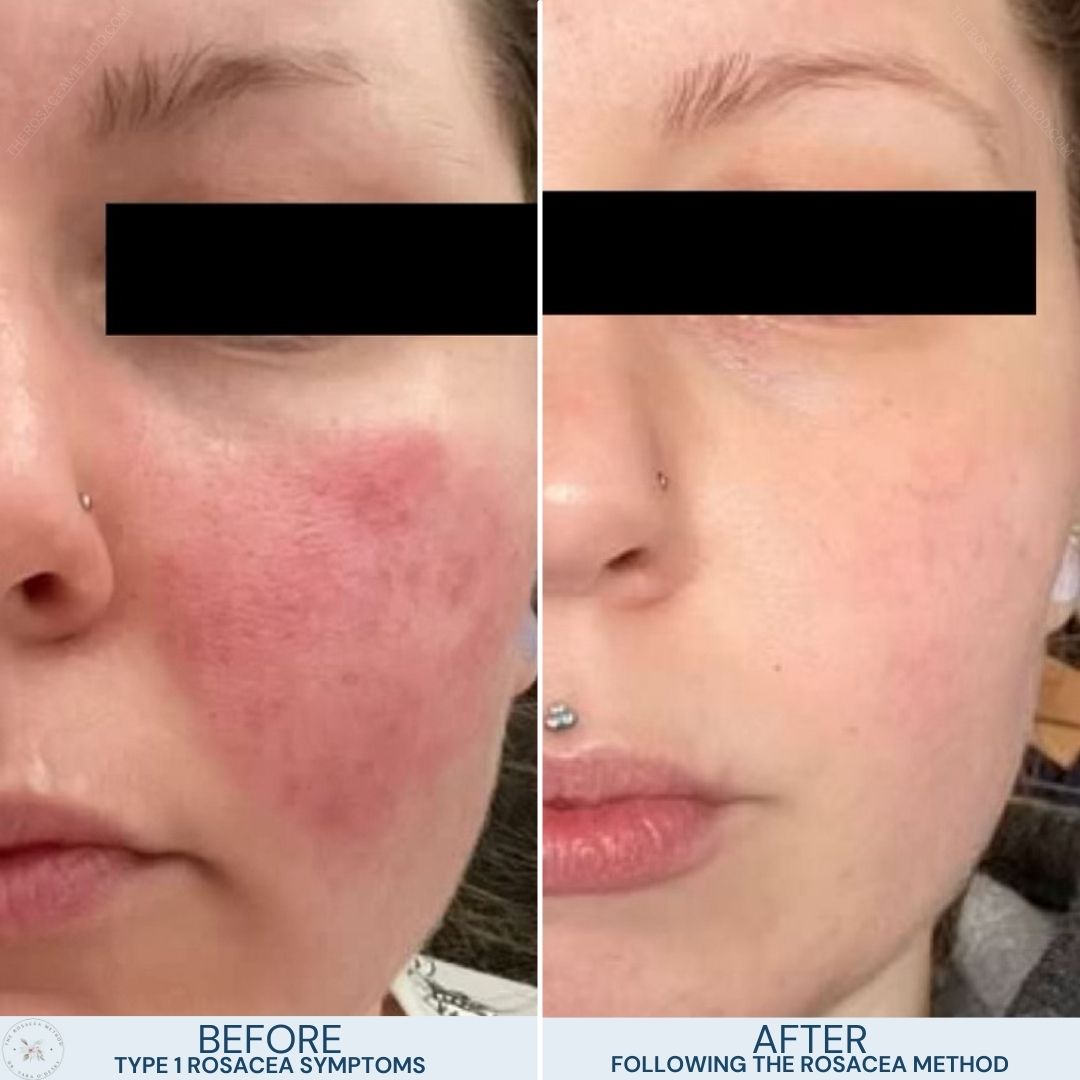
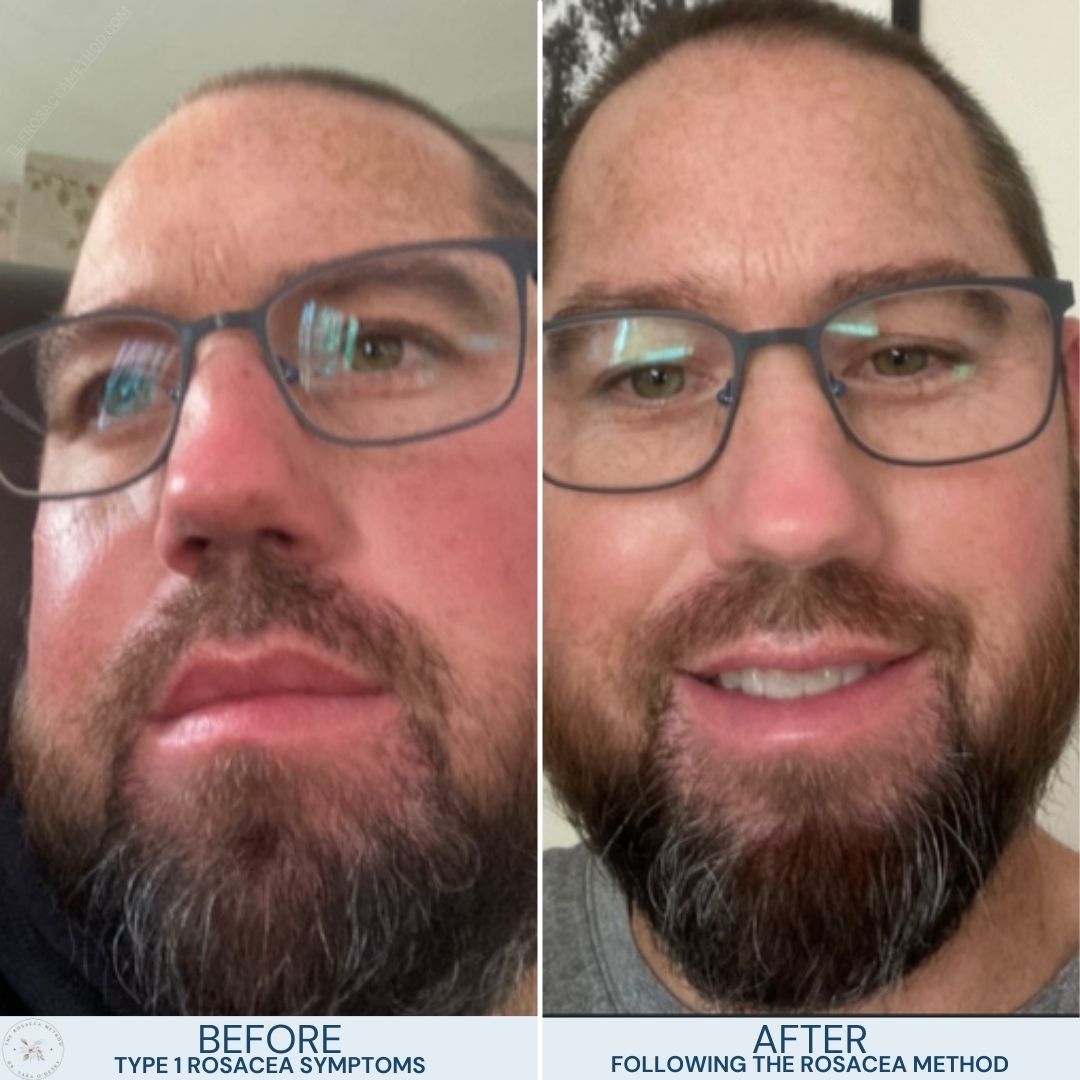
Frequently Asked Questions for Type 1 Rosacea (ETR)
Q: What are the most common treatments for Type 1 Rosacea?
A: The most common pharmaceutical treatments for Type 1 Rosacea include topical creams such as Metrogel, Noritate, and Finacea, as well as oral medications like doxycycline. Other options include natural alternatives such as focusing on gut health, dietary changes and lifestyle modifications.
Q: How is Type 1 Rosacea diagnosed?
A: Type 1 Rosacea is typically diagnosed through a physical examination by a dermatologist, based on the visible symptoms such as erythema, and visible blood vessels on the skin as well as information provided by the patient.
Q: What are the pros and cons of using azelaic acid for Type 1 Rosacea treatment?
A: Azelaic acid is a commonly used topical treatment for Type 1 Rosacea. Pros include its anti-inflammatory properties and effectiveness in reducing redness. However, some cons may include skin irritation and dryness as potential side effects.
Q: Can Type 1 Rosacea affect the immune system?
A: While Type 1 Rosacea mainly affects the skin, it is believed to be linked to immune system responses. The condition may be influenced by immune system reactions and inflammation within the body.
Q: Are there any environmental factors that can trigger Type 1 Rosacea flare-ups?
A: Yes, environmental factors such as chemical products, extreme temperatures, wind, and certain allergens can trigger or exacerbate Type 1 Rosacea symptoms. It is important to identify and avoid these triggers to manage the condition effectively.
Q: How does Type 1 Rosacea affect the eyes?
A: Type 1 Rosacea can lead to ocular symptoms such as conjunctival hyperemia, conjunctivitis, and blepharitis. It is essential to seek medical attention if you experience eye redness, irritation, or other eye-related issues along with skin symptoms.
Q: Can SPF products help in managing Type 1 Rosacea?
A: Yes, using a natural mineral sunblock with a high sun protection factor (SPF) is helpful for individuals with Type 1 Rosacea if you plan to spend a long time in the mid-day sun. Sunhats can also help protect the skin from harmful UV rays.
References:
- Barakji YA, Rønnstad ATM, Christensen MO, Zachariae C, Wienholtz NKF, Halling AS, Maul JT, Thomsen SF, Egeberg A, Thyssen JP. Assessment of Frequency of Rosacea Subtypes in Patients With Rosacea: A Systematic Review and Meta-analysis. JAMA Dermatol. 2022 Jun 1;158(6):617-625. doi: 10.1001/jamadermatol.2022.0526. PMID: 35385049; PMCID: PMC8988027. https://pubmed.ncbi.nlm.nih.gov/35385049/ ↩︎
- Rosacea, Germs, and Bowels: A Review on GasWang FY, Chi CC. Rosacea, Germs, and Bowels: A Review on Gastrointestinal Comorbidities and Gut-Skin Axis of Rosacea. Adv Ther. 2021 Mar;38(3):1415-1424. doi: 10.1007/s12325-021-01624-x. Epub 2021 Jan 28. PMID: 33507499; PMCID: PMC7932979.gastrointestinal Comorbidities and Gut–Skin Axis of Rosacea – PMC (nih.gov) ↩︎
MEDICAL DISCLAIMER
This content is for informational and educational purposes only. It is not intended to provide medical advice or to take the place of such advice or treatment from a personal physician. All readers/viewers of this content are advised to consult their doctors or qualified health professionals regarding specific health questions. Neither Dr. Tara O’Desky nor the publisher of this content takes responsibility for possible health consequences of any person or persons reading or following the information in this educational content. All viewers of this content, especially those taking prescription or over-the-counter medications, should consult their physicians before beginning any nutrition, supplement or lifestyle program.
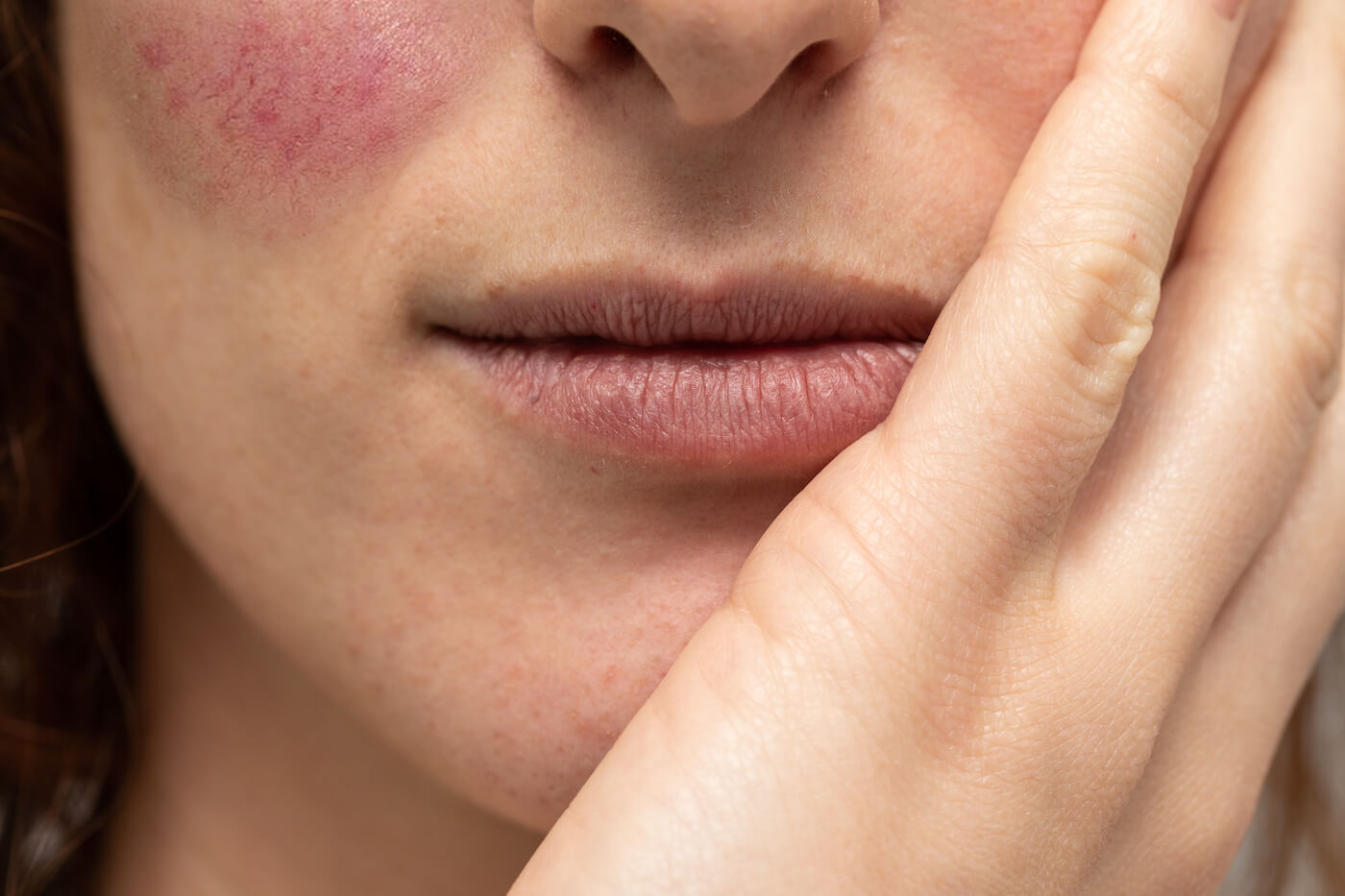
Leave a Reply
Learn More About Me
20 years of rosacea
- rosacea
- chronic skin issues
- gut issues
- food sensitivities
- inflammatory conditions
After 20 years of ineffective treatments and medications, Dr. O'Desky reversed her rosacea 100% through dietary changes and food-based medicine.
Health Coach & Holistic Skin Expert
Meet
Dr. Tara O'Desky
Since developing her own holistic healing program,
The Rosacea Method, she has helped countless patients of all ages with:
- rosacea
- chronic skin issues
- gut health
- food sensitivities
- inflammatory conditions
Dr. O'Desky continues to see patients in private practice in the USA and also sees clients via Telehealth. She currently offers various programs and workshops for people all over the world dealing with chronic health issues, poor gut health, and rosacea.
Health Coach and Holistic Skin Expert
Meet Dr. Tara O'Desky
-L. M.
"I want to say thank you so much for the program!
I never feel hungry anymore. My diet has opened up a ton and I feel really healthy and excited learning that there’s so many things I can eat now that are healthy and tasty. I felt good through the entire cleanse and my skin has definitely improved."
-Anonymous
"I felt so hopeless and I could not see light at the end of the tunnel. Now I have hope again and I feel more positive about my situation overall! Yes it can definitely heal, I have so so sure others heal! This program is great, I feel like It covers everything! Thank you! "
-Darlene B
"For the first time in 6 years, I feel like I have been given a clear direction to go in that will actually heal my skin. There's so much guess work that comes along with skin complications and Tara helps to clear all that up.Recommend 1000%."
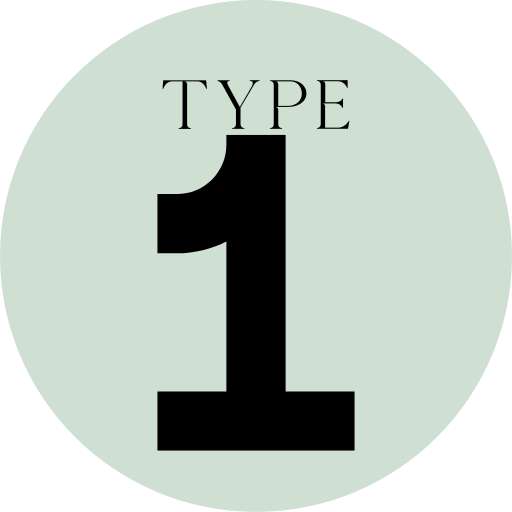 Type 1: Erythematotelangiectatic Rosacea
Type 1: Erythematotelangiectatic Rosacea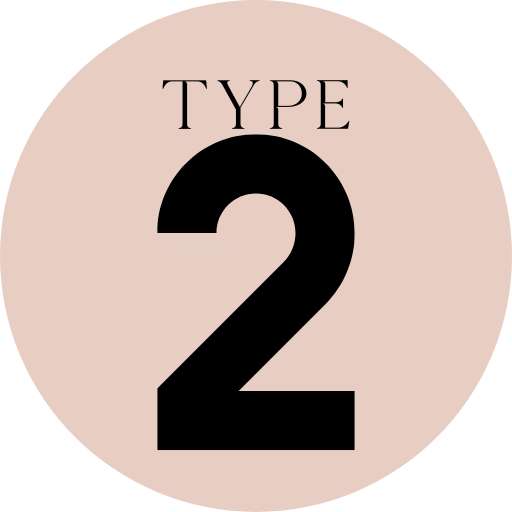
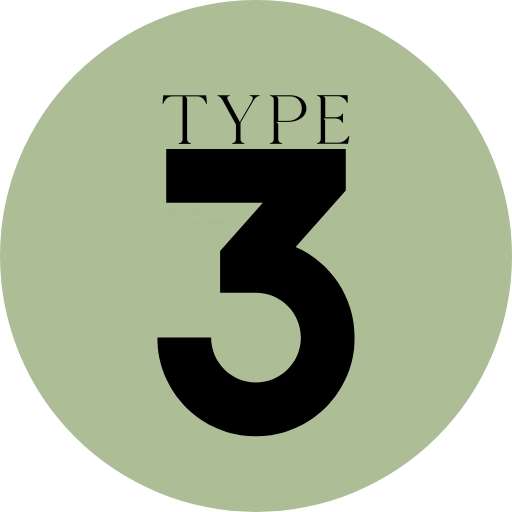
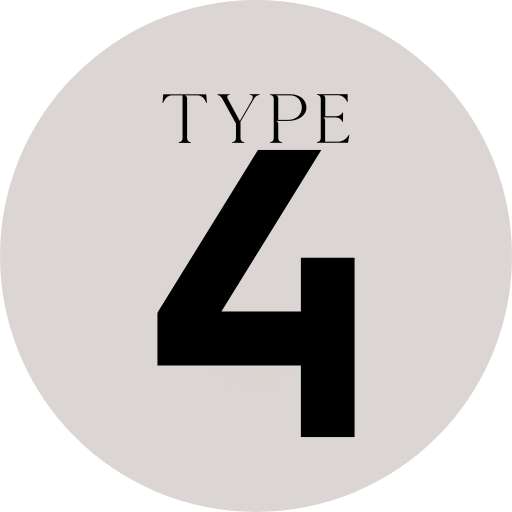
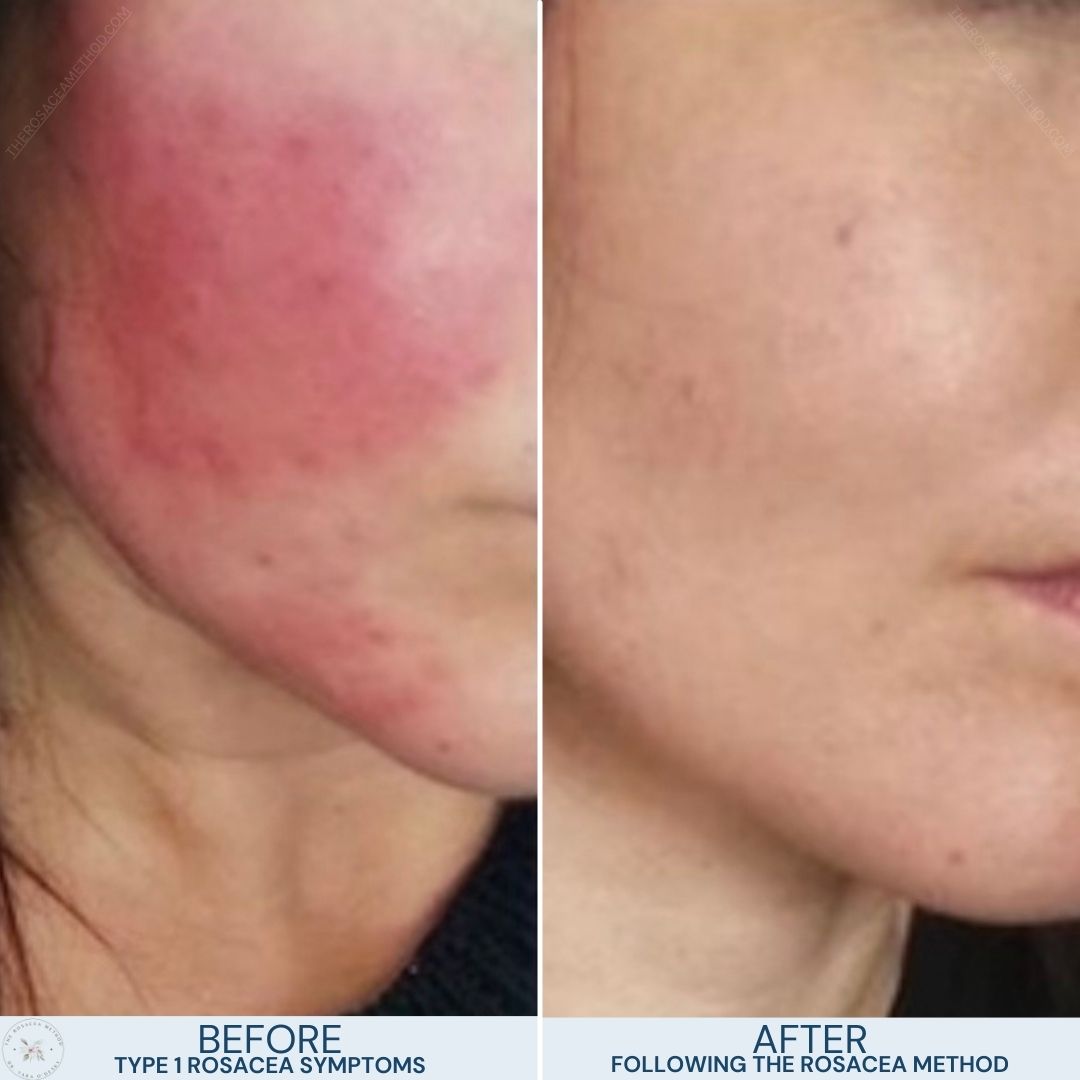
Can you have type 2 and not type 1? I believe i had a little bit of type 1 while in high school but have developed type 2, not type 1. The bumps themselves are red but i don’t flush.
Yes, there are many variations of all types and some overlap, but not always.
Most useful information, thanks for everything.
Most Apt and comprehensive information not said before!
So glad you’re finding it helpful!
I had no idea there were multiple kinds of rosacea – this is excellent information, including so many helpful tips! Thank you!
Thank god i came across you for all this information!
This blog has been a game-changer for me in managing ETR Type 1 Rosacea. The expert care, treatment recommendations, and insightful information have truly made a difference in transforming my skin. Grateful for this invaluable resource
Such great tips. I didn’t know for the longest time there were different stages of rosacea. Your info is so helpful.
I’m so glad this was helpful to you!
As someone for the first time struggling with skin issues in my late 30s this is helpful. It’s so daunting trying to understand what created this rosacea, is it my products, my gut, what to start eliminating. This gives me hope- currently depressed with the state of my skin 🫣 Thanks for the information!
Don’t be depressed, be curious and open to learning! The body is amazing, and you WILL heal!
When my rosacea started, I tried many external treatment without success. After doing a lot of research, I fully believe in a holistic approach to healing and I am glad you are sharing this with the world.
I spent so long searching for answers that I can’t NOT share this info with the world!
This is so helpful, thank you. I have suffered with rosacea for 11 years now and since finding your page this has led me to look deeper into the condition. I find your stories and posts so helpful.
So happy to hear this!
I have rosacea for a while and I find the information you give very useful.
Wonderful!
Thanks Tara for all your content. I would love to learn more so I can help my daughters 💞
Thank you dr tara. I am grateful to have found this your page. I experience redness that often occurs, always appears suddenly and feels hot. I don’t know what causes it. It really disturbs my appearance. Until now I am still trying to recover from rosacea.
Healing takes time! You’ll get there!
This makes so much sense! Your Instagram page has been so helpful with my Type 1 Rosacea and severe flushing that I hope will clear soon!